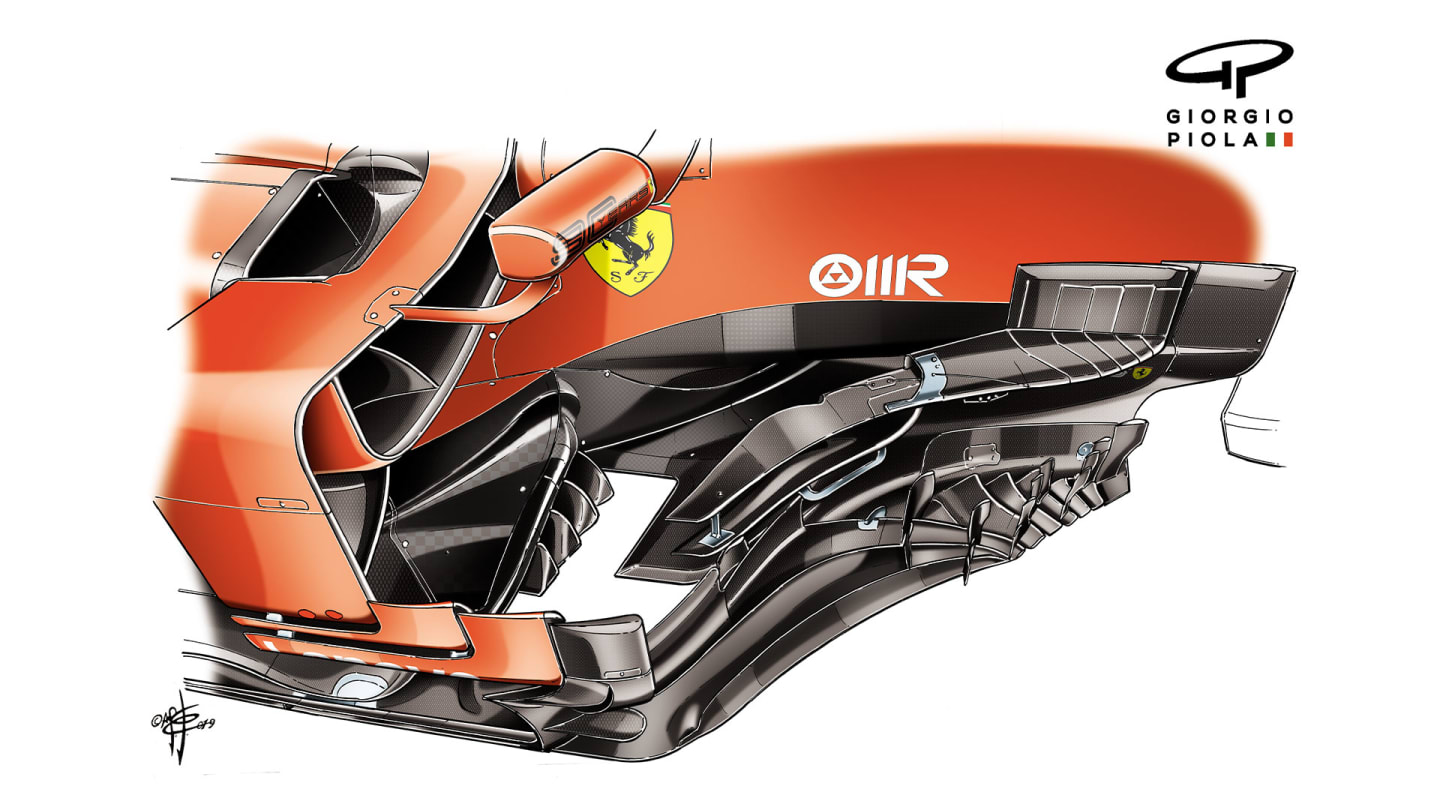
Technical
TECH TUESDAY: Why is the 'boomerang' so fashionable in 2019?

Share

Ferrari’s latest bargeboard, which appeared in Hungary, brings the team into line with most others in the pit lane in the use of a ‘boomerang’ wing section atop the individual vertical guide vanes. This feature first appeared on the 2018 Mercedes W09 and has been steadily adopted by almost every team since.
McLaren incorporated it into their 2019 car, the MCL34, right from the start of the season while others have added the feature as they have developed. Alfa Romeo and Red Bull debuted their versions of it at Paul Ricard, Williams joined the party at Silverstone, Haas and Toro Rosso in Germany – where Mercedes enhanced their version as part of a major aero upgrade.
So, what does this sculpted section of carbon fibre do that has made it such a fashion item in 2019?
Paradoxically, the boomerang is profiled so as to create mild lift rather than downforce. The opposite of downforce, lift is created when air flowing past a body surface creates an upward force, as in an aircraft wing. Lift is unavoidably created around some of the body surfaces of an F1 car, with the upper surfaces of the sidepods usually the biggest contributors. The lift is more than cancelled out by the downforce from the wings and underbody, of course, but aerodynamicists will still usually devote a lot of time and effort to minimising or eradicating lift. So why would they want to create lift with the addition of this bargeboard boomerang wing?

The answer is that the lift creates a high-pressure bubble around it – which the air flowing through the guide vanes of the bargeboard will turn hard to avoid. This outward turning is exactly what the aerodynamicists are trying to get the airflow in that area to do – and this pressure bubble enhances that effect. With the air coming through the suspension to the bargeboard area naturally wanting to turn hard outwards to avoid that high pressure area, the guide vanes can be angled more aggressively to help it do that without detaching. That in turn enhances the outwash coming around the outside of the front tyre by meeting up with and strengthening that flow, thereby better preventing it from interfering with the airflow down the body sides that is being channeled towards the top and sides of the diffuser, so as to enhance the underbody airflow. The more strongly separated the outwash flow can be made from that flowing down the body sides, the longer those flows will remain separate as the speed of the car falls, so enhancing low-speed downforce in particular.

As the airflow beneath the nose and through the suspension makes its way down the car, the bargeboards help separate it between that outwash flow and the flow being directed to the underfloor of the car. The high-pressure bubble around the boomerang wing also induces the air heading for the floor to turn inwards to avoid it, thereby enhancing the flow to the underbody too.
With careful tuning, the combined downforce gains from the underfloor and the improved outwash will more than cancel out the lift created by the boomerang itself.
YOU MIGHT ALSO LIKE
FeatureF1 Unlocked McLaren on the march, Mercedes in the mix, and action aplenty – What To Watch For in the Bahrain Grand Prix
Feature What the teams said – Qualifying in Bahrain
Feature FACTS AND STATS: McLaren’s first Bahrain win and Red Bull’s first double score of 2025
Feature TREMAYNE: McLaren’s impressive pace in 2025 means they could soon be facing an age-old F1 problem




